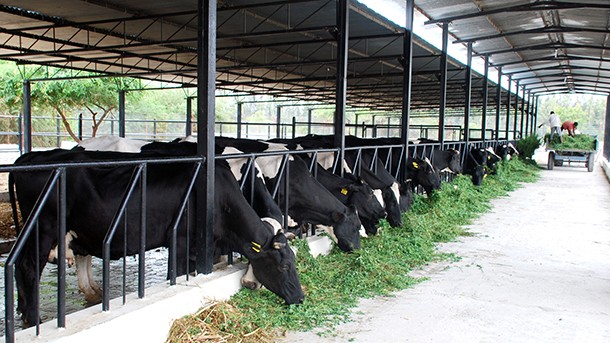
India has announced to partially open up its dairy and poultry markets by allowing the import of dairy products from the United States (U.S.), in an offer for a limited trade deal.
India is the world’s largest milk-producing nation. It has so far never allowed imports in the dairy industry to protect the livelihood of more than 80 million rural households, whose bread and butter depend upon the dairy industry. But is seems that Central Government is leaving no stone unturned to further strengthen ties with the U.S. The deal is likely to be
signed during U.S. President – Donald Trump’s 2-day India visit on February 24-25, 2020.
The dairy imports will have a tariff of 5% and quotas. Moreover, India would also require a certificate from the U.S. certifying that the dairy products have not been derived from animals that have consumed feeds that include internal organs, blood meal or tissues of ruminants.
The offers are being made after the U.S. Trade Representative – Robert Lighthizer cancelled his India trip this week and preferred having a telephonic discussion with Minister of Commerce &
Industry in India – Piyush Goyal.
Speaking at the Times Now Conclave on India Action Plan 2020 in New Delhi on February 13, 2020, Piyush Goyal said that Government is mulling a lot of business friendly policies that are aimed at enhancing the ease of doing business and attracting foreign investment in the country.
Piyush Goyal’s twitter handle read, “Spoke at the @TimesNow Conclave on India Action Plan 2020 and highlighted the various business friendly policies of the Government to enhance ease of doing business, attract investments into the country and boost exports.”
Spoke at the @TimesNow Conclave on India Action Plan 2020, and highlighted the various business friendly policies of the Government to enhance ease of doing business, attract investments into the country and boost exports.
— Piyush Goyal (@PiyushGoyal) February 13, 2020:https://t.co/YC2FQymylX pic.twitter.com/sNUjFIpL9C
Speaking on the occasion, Michael Dykes – President of the International Dairy Foods Association and a member of USTR’s agricultural trade policy advisory committee said, “We’re always looking for market access, but in terms of India, as of today I’m not aware of any real progress going on.”
Besides, India is looking forward to restoration of benefits under the Generalized System of Preferences (GSP), which was called off by Trump after India put price caps on medical devices, such as cardiac stents and knee implants, and introduced new data localization requirements and e-
commerce restrictions.
U.S. is India’s second largest trader partner after People’s Republic of China. The bilateral trade between India and U.S. registered a record figure of U.S.$ 142.6 billion in 2018. However, in 2019 the U.S. recorded a trade deficit of U.S. $ 23.2 billion with India.
In addition, India has also made an offer to import U.S. chicken legs, turkey, blueberries and cherries. India has even agreed to reduce the tariff on U.S. chicken legs from 100% to 25%. But even tis doesn’t seems enough. The U.S. wants it to be further reduced to 10%.
Talking about other offers of the deal, India has agreed to reduce the 50% tariff on Harley Davidson motorcycles in India. Trump had earlier tagged India as “tariff king” for imposing heavy tariff on these motorcycles.
Separately, a Parliament Panel is reviewing a draft data privacy law that imposes stringent controls over cross-border data flows and gives the Government powers to seek user data from companies. This point is not a part of the proposed trade deal, but it may be discussed on the sidelines of
Trump’s visit to India.







